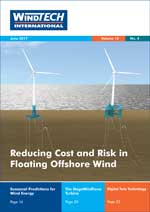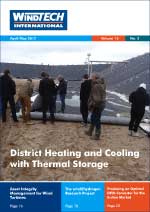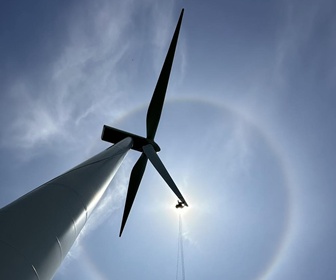- Category: 2017
The Front CoverIn recent years the offshore wind industry has gained an increased awareness of the detrimental effects of underwater noise caused by pile driving. Fistuca BV is currently building a hammer, the BLUE 25M, that can compete with the largest hydraulic hammers in the industry, which tackles the noise issue at the source. Previous testing at a site next to Heerema vessel Balder showed a significant reduction in underwater noise levels. Publisher's NoteHack the Wind: foster creativity to solve current wind energy challenges Features
|
|
16th Wind Integration Workshop
- Category: 2017
The Front CoverAmbitions and developments in offshore wind energy have forced us to re-evaluate our approach and methods in wind turbine blade design once more. On page 7 you can read about the the InnoTip research project which ran as a collaboration between LM Wind Power’s aerodynamics team and ECN. Publisher's NoteEurope is on Track for a Good Year Features
|
ZF |
- Category: 2017
The Front CoverThe standard inspection method for quality assurance of the exterior surfaces of wind turbines is to employ people trained as rope access or industrial climbers. But this is not the only way. The article on page 7 outlines how drones can undertake visual inspection of turbines, and then supporting software and archiving can be used to analyse the data. Publisher's NoteHUSUM Wind, the home of the wind industry with a German touch Features
|
|
16th Wind Integration Workshop
- Category: 2017
The Front CoverThe evolution of lidar technology now permits unprecedented mapping of the true three-dimensional atmospheric structures at multiple scales of relevance to the wind energy industry even within highly heterogeneous landscapes. On page 6 the authors describe some key research opportunities and challenges facing experimental investigations and present results from their recent field campaigns. Publisher's NoteWind energy is becoming mainstream Features
|
16th Wind Integration Workshop |
- Category: 2017
The Front CoverTechnological advances in floating wind will open up opportunities to exploit the abundant wind resource in deeper water sites. The article on page 6, by Robert Proskovics and Gavin Smart from ORE Catapult, analyses the costs and risks of the three most common types of floating wind structure and compares them to those of a fixed-bottom monopile wind farm. Publisher's NoteNew developments in wind technology Features
|
16th Wind Integration Workshop |
- Category: 2017
The Front CoverDistrict heating and cooling (DH&C) systems, which use the wind-generated electricity, can transfer electricity to thermal energy and store it for later use in a cost-effective way. The image on the cover shows a thermal heat storage pit under construction. Click here to read about the subject written by Anders Dyrelund and Søren Møller Thomsen from Ramboll, Denmark. Publisher's NoteCan Trump stop the transition to renewable energy? Features
|
16th Wind Integration Workshop |
















